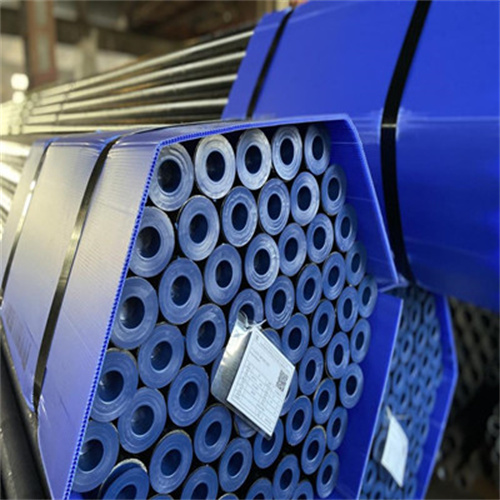Table of Contents
ท่อปลอกและท่อเจาะเป็นองค์ประกอบสำคัญสองประการในอุตสาหกรรมน้ำมันและก๊าซ โดยแต่ละองค์ประกอบมีจุดประสงค์ที่แตกต่างกันในกระบวนการขุดเจาะ แม้ว่าทั้งสองอาจดูคล้ายกันเมื่อมองแวบแรก แต่ก็มีความแตกต่างที่สำคัญระหว่างสองสิ่งนี้ซึ่งเป็นสิ่งสำคัญที่ต้องทำความเข้าใจเพื่อให้มั่นใจว่าการขุดเจาะจะประสบความสำเร็จ
ท่อปลอกถูกใช้เพื่อวางแนวผนังของหลุมเจาะเพื่อป้องกันไม่ให้รูยุบและเพื่อแยกการก่อตัวทางธรณีวิทยาต่างๆ โดยทั่วไปแล้วจะทำจากเหล็กและมีหลายขนาดและเกรดเพื่อรองรับสภาพการเจาะที่แตกต่างกัน ท่อปลอกได้รับการติดตั้งในขณะที่กำลังเจาะบ่อ โดยแต่ละส่วนของท่อจะถูกเชื่อมต่อและหย่อนลงในรูในขณะที่การเจาะดำเนินไป


ในทางกลับกัน ท่อเจาะใช้ในการส่งของเหลวและแรงบิดจากแท่นขุดเจาะไปยังดอกสว่านที่ด้านล่างของรู นอกจากนี้ยังทำจากเหล็กและได้รับการออกแบบให้ทนทานต่อความเค้นและแรงบิดในระดับสูงในระหว่างกระบวนการเจาะ ท่อเจาะเชื่อมต่อกับแท่นขุดเจาะที่พื้นผิวและขยายลงไปในหลุมเจาะ เพื่อให้สามารถหมุนและเลื่อนดอกสว่านได้
ความแตกต่างที่สำคัญประการหนึ่งระหว่างท่อปลอกและท่อเจาะคือหน้าที่ที่เกี่ยวข้องในกระบวนการขุดเจาะ . ท่อปลอกใช้เป็นหลักในการปกป้องหลุมเจาะและให้การสนับสนุนโครงสร้าง ในขณะที่ท่อเจาะใช้เพื่อส่งกำลังและของเหลวในการเจาะไปยังดอกสว่าน ความแตกต่างนี้มีความสำคัญเนื่องจากแต่ละส่วนประกอบมีบทบาทสำคัญในความสำเร็จโดยรวมของการขุดเจาะ
ความแตกต่างที่สำคัญอีกประการระหว่างท่อปลอกและท่อเจาะคือการออกแบบและการก่อสร้าง โดยทั่วไปท่อปลอกจะหนาและหนักกว่าท่อเจาะ เนื่องจากต้องทนทานต่อน้ำหนักของชั้นหินที่อยู่ด้านบน และให้การสนับสนุนหลุมเจาะ ในทางกลับกัน ท่อเจาะได้รับการออกแบบให้มีความยืดหยุ่นและน้ำหนักเบากว่าเพื่อให้สามารถจัดการและเคลื่อนย้ายได้ง่ายระหว่างการขุดเจาะ
นอกเหนือจากฟังก์ชันและการออกแบบแล้ว ท่อปลอกและท่อเจาะยังแตกต่างกันในแง่ของการเชื่อมต่อและ เกลียว โดยทั่วไปท่อปลอกจะเชื่อมต่อโดยใช้การเชื่อมต่อแบบเกลียวที่ออกแบบมาเพื่อให้ปิดผนึกแน่นและป้องกันการรั่วไหล ในขณะที่ท่อเจาะเชื่อมต่อโดยใช้ข้อต่อเครื่องมือที่ช่วยให้ประกอบและถอดแยกชิ้นส่วนได้อย่างรวดเร็วและง่ายดาย
แม้จะมีความแตกต่างเหล่านี้ ท่อปลอกและท่อเจาะ เป็นทั้งองค์ประกอบสำคัญในกระบวนการขุดเจาะและทำงานร่วมกันเพื่อให้มั่นใจว่าการขุดเจาะจะประสบความสำเร็จ โดยการทำความเข้าใจความแตกต่างที่สำคัญระหว่างทั้งสองนี้ ผู้ดำเนินการขุดเจาะสามารถตัดสินใจโดยมีข้อมูลรอบด้านเกี่ยวกับการเลือกและการใช้ท่อปลอกและท่อเจาะในโครงการขุดเจาะของตน
โดยสรุป แม้ว่าท่อปลอกและท่อเจาะอาจดูคล้ายกันตั้งแต่แรกเห็น มีวัตถุประสงค์ที่แตกต่างกันในกระบวนการขุดเจาะ และมีความแตกต่างที่สำคัญในแง่ของฟังก์ชัน การออกแบบ และการเชื่อมต่อ ด้วยการเข้าใจความแตกต่างเหล่านี้ ผู้ดำเนินการขุดเจาะสามารถรับประกันความสำเร็จของการดำเนินการขุดเจาะ และเพิ่มประสิทธิภาพและประสิทธิผลของโครงการขุดเจาะของตนให้สูงสุด
Drill pipe, on the other hand, is used to transmit drilling fluid and torque from the drilling rig to the drill bit at the bottom of the hole. It is also made of steel and is designed to withstand high Levels of stress and torque during the drilling process. Drill pipe is connected to the drilling rig at the surface and extends Down into the wellbore, allowing for the rotation and advancement of the drill bit.
One of the key differences between casing pipe and drill pipe is their respective functions in the drilling process. Casing pipe is primarily used to protect the wellbore and provide structural support, while drill pipe is used to transmit power and drilling fluid to the drill bit. This distinction is important because each component plays a crucial role in the overall success of drilling operations.
Another important difference between casing pipe and drill pipe is their design and construction. Casing pipe is typically thicker and heavier than drill pipe, as it needs to withstand the weight of the overlying rock formations and provide support for the wellbore. Drill pipe, on the other hand, is designed to be more flexible and lightweight to allow for easy handling and movement during drilling operations.
In addition to their functions and design, casing pipe and drill pipe also differ in terms of their connections and threading. Casing pipe is typically connected using threaded connections that are designed to provide a tight seal and prevent leaks, while drill pipe is connected using a tool joint that allows for quick and easy assembly and disassembly.
Despite these differences, casing pipe and drill pipe are both essential components in the drilling process and work together to ensure the success of drilling operations. By understanding the key differences between the two, drilling operators can make informed decisions about the selection and use of casing pipe and drill pipe in their drilling projects.
In conclusion, while casing pipe and drill pipe may appear similar at first glance, they serve distinct purposes in the drilling process and have key differences in terms of their functions, design, and connections. By understanding these differences, drilling operators can ensure the success of their drilling operations and maximize the efficiency and effectiveness of their drilling projects.
